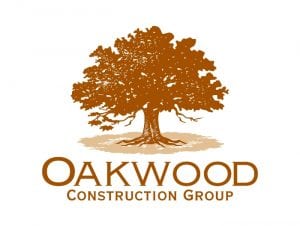Regardless of where your construction business is located, you face serious competition from other companies who offer the same services that you do. What that means is that the only way to come out ahead in the race for new business is to brand your company so that it is unforgettable both to current clients and potential clients. The best way to do that is to spend some time building your brand from the ground up.
Marketing and Branding Challenges for Construction Companies
Because the competition in the construction business is fierce, there are some big challenges involved in creating a viable brand for your company. However, you have to take the time to do it if you want your business to succeed.
How to Create a Memorable Brand
Your brand is comprised of many different things, but ultimately, it all boils down to one thing: the way your target audience thinks of you is your brand. That means that the only thing you can do is to give thought to every aspect of how you present yourself in the hopes that your clients will perceive you in the way you want them to.
How can you do that? You can start by:
1. Understanding your competitors and what they have to offer
2. Finding ways to differentiate yourself from them (by virtue of what you do, how you do it, or how much you charge, for example)
3. Knowing who your customers are and what they want
4. Speaking to them using a consistent voice
Those might sound like simple things but they are actually fairly complex. You can’t hurry through the process and expect to come out on the other end with a terrific and recognizable brand. You have to do the work.
What Should Your Logo Say to Customers?
One key element of branding is choosing the right logo to represent your company. Logo design for building companies are both an art and a science. It’s not enough to stick your company name inside of a line drawing of a house or office building. Your logo needs to get at the essence of who you are.
What should you keep in mind when picking a logo? Here are a few things:
1. The colors you choose should make people think of construction and stability. That means that colors like brown, white, and brick red are good because they call to mind construction materials. However, don’t limit yourself. If your specialty is building environmentally-friendly homes, using green is smart.
2. Limit the words you use to the name of your company. Some huge brands, like Apple and Nike, can get away without including the name of their company. You need to include yours in some way if you want people to recognize your brand.
3. Keep the fonts used simple and easy to read. This isn’t the time for an over-the-top script font. A plain Sans Serif or Serif font will ensure that your logo is clear.
4. Choose shapes that convey comfort and reliability. Circles tend to indicate safety, while square or rectangular shapes signify security and solidity.
While you do want to keep in mind the norms of your industry, it’s also important to find ways to make your logo unique.
This logo that we designed is a good example:

We played off the name of the company and used an oak tree in the logo. The brown color indicates that this company specializes in wood construction, and the age and majesty of the tree – combined with the overall round shape of the log – send a message of strength and comfort.
How to Use a Customer Persona to Hone Your Brand’s Voice
To fine-tune your brand and ensure that it speaks directly to your target audience, it may help to create a customer persona – a virtual representation of your ideal customer. Your persona should take basic demographics into consideration, including the average age and income level of your clients. However, you should also keep hobbies, interests, and other concerns at the forefront.
Once you have created a persona (or more than one if you feel it’s necessary) you can use it to decide on the right voice to use for your brand. For example, Rolls Royce is a luxury brand that uses refined language in their marketing. Red Bull targets a young audience and uses brash, hip language in their social media posts. The voice you choose should speak directly to the people who are most likely to hire you.
Blueprint for Marketing
Just as you would when constructing a home or commercial building, you need to begin marketing with a blueprint. Without a plan, you might have some marketing success – but it won’t last and you won’t be able to fix it easily when things go wrong. That means that you need to write a marketing plan, and then use that plan to reach your intended audience.
Tips to Help You Construct a Marketing Plan
If you’ve never written a marketing plan before, you might find the thought a bit daunting. At heart, though, marketing plans are relatively simple in construction. They have four basic parts:
- 1. A marketing goal – what do you hope to accomplish through marketing?
2. A marketing strategy – what tools will you use to accomplish your goal?
3. One or more marketing tactics – how will you use your chosen tools to achieve your goals?
4. A marketing budget – how much do you plan to spend, and where will you spend it?
It’s a good idea to complete these steps in order as each builds on the last. If the marketing goal is to increase your revenue by 25%, your strategy might be to use online marketing to accomplish it. The tactics you choose might be blogging and social media marketing. You would then decide how much to spend on each tactic before proceeding.
How to Tailor Your Marketing Campaigns to Your Target Audience
An important part of developing a marketing campaign is knowing who you want to reach. Just as companies that advertise on television choose the shows on which they run ads, you need to pick your tactics with your audience in mind. A construction company that specializes in revamping old office buildings might want to spend a significant part of their marketing budget on LinkedIn advertising. On the other hand, a company that caters to wealthy homeowners might choose Pinterest marketing as a focus of their campaign.

Use your customer persona to determine how to find your audience online – and then tailor your marketing plan based on what you learn.
Foolproof Content Marketing Ideas to Try
Bill Gates once said, “Content is king,” and he was right. While you can certainly spend your marketing budget on traditional advertising, content marketing – if you do it right – has the potential to earn you a bigger return on your investment than regular marketing does. Here are some ideas to try.
Why Every Construction Company Should Have a Blog
Let’s start with blogging. Any company with an online presence can benefit from having a blog. When you have an active blog on your website, you ensure that your website is constantly being updated – and that means that Google will give preference to your site over those that aren’t updated on a regular basis. That can help with your search engine placement and SEO.
A blog also gives you an inexpensive way to connect with potential clients by offering them valuable content. Your blog should cover topics that you know are of interest to your target audience – in other words, it’s a great opportunity to talk about construction issues, show off completed projects, and demonstrate your expertise.
Types of Content to Try
Just as you wouldn’t build the same house every time a client hires you, you shouldn’t always post the same kind of content. Variety can help keep your audience engaged in what you’re doing. Here are a few suggestions:
1. Written content is easy and inexpensive to produce. Whether you’re writing a 500-word blog or a 140-character Tweet, there’s a lot of power in the written word.
2. Photographs are a powerful medium that can allow you to show off your work and impress your target audience. Before-and-after photos are particularly effective for construction companies.
3. Videos can allow you to give clients a peek behind the scene or demonstrate a DIY technique for them to try at home.
4. Infographics can help you convey a great deal of complex information quickly.
All of these formats are things you can produce yourself or hire someone to create for you.
Creative Social Media Marketing for the Construction Industry
Social media sites are popular – and growing more popular by the day. Facebook is still the largest site, but others to consider include Twitter, Pinterest, Instagram, Snapchat, and LinkedIn. Here are some ideas to help you make the most of your social media presence.
1. Don’t try to be on every site. Inactive accounts won’t help you build your brand, so use your customer persona to determine which platforms make the most sense for your marketing strategy. If you cater to businesses, LinkedIn should probably be the focus of your marketing. Companies who build private homes might use Facebook or Instagram instead.
2. Use social media scheduling tools to ensure that your pages are updated regularly. That way even if you’re busy your page will be updated.
3. Integrate your customer service with your social media. You might want to keep them separate, but the fact is that the people who follow you on social media will sometimes ask questions and you might as well embrace it. When you demonstrate your helpfulness to an existing client on Facebook, you’re also showing potential future clients that they can depend on you.
4. Find ways to encourage your followers to create content for you. For example, a home construction company might encourage clients to post photographs of their holiday decorations and then give a prize to the best house.
5. Use Twitter or LinkedIn to establish a referral program. When you do work for one satisfied client, the chances are good they’ll be eager to recommend you to others. You can incentivize them to do it with effective social media marketing.
6. Post videos and pictures of construction projects in progress to engage and intrigue your followers. People love to get a behind-the-scenes look at the brands they follow.
7. Follow relevant pages and publications and share their information with your followers. For example, you might share an article about how to get your house ready for winter.

These ideas can help you build a loyal and enthusiastic following – and turn your followers into ambassadors for your brand.
What to Do When a Campaign Doesn’t Work
You know the saying that when building, you should measure twice and cut once. That’s true in marketing, too, although the measurement can only happen after you run a campaign, not beforehand. Let’s look at what that means.
How to Understand Analytics and Determine When a Campaign Isn’t Working
The first step is to measure the performance of your marketing campaigns. You can do that using basic tools like Google Analytics, as well as social media tools and email marketing software. For each marketing campaign you run, you should look at the return it’s getting you. If you’ve sent out a marketing email that got a 50% open rate but only a 1% click-through rate, you can use that information to improve the email to get better results.
When you test your campaigns, you should use split-testing software that allows you to tweak one element of your campaign and measure your results. If you change the images in your email and your click-through rate changes from 1% to 3%, the test was a success and you can update your email campaign accordingly.
When and How to Reallocate Your Marketing Budget
The final step in measuring your marketing campaign is figuring out when you need to reallocate funds. There’s a principle in marketing that says that at any given time, 80% of your results come from 20% of your efforts. If you measure your ROI and find that the majority of your new business is coming from leads you got from a Facebook ad, then it makes sense to take a step back to your marketing plan and allocate more funds for Facebook advertising.
Conclusion
Marketing is very much a stop-and-go concern. Even professional marketers often get a campaign wrong at the start. However, if you take the time to be conscientious about building your brand, and the follow through with a detailed marketing plan, you can use it to improve customer loyalty, attract new clients, and grow your business.
